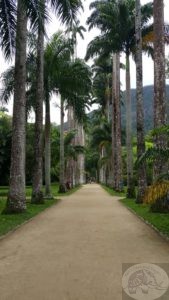
Palms from a single parent lining the central avenue of the Jardim Botanico, Rio de Janeiro
Palm-lined avenue in the park
Quite a while ago (actually one of the earlier posts on this blog site), I created a page entitled ‘Photography’, with the intention of telling stories through photographs – the intention is still there, and I have plenty of photographs in various categories that I can probably create at least 15 to 20 collages/entries – but that first ‘photo-essay’ consisted of a collection of images from different botanic gardens around the world that I have had the opportunity to visit. Where ever I go, if possible, I will visit at least one botanic garden or park, just to see the great variety of flowers and trees that are indigenous to the region, as well as those species and varieties introduced from other regions. Rio has a wonderful botanic garden, established in 1808, and covering (including the entire park) an area of 140 hectares or approximately 350 acres. The Jardim Botanico itself covers an area of approximately 54 hectares or around 120 acres, and contains several thousand species of plants. The majestic central road that runs through the heart of the garden is lined by 134 palms all originating from a single parent plant.
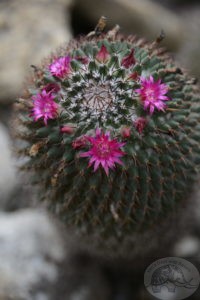
Small miracles of nature…
32,000 books
There are several important statues or historical relics within the park, including a gunpowder factory, sculptures, and a library with a collection of more than 32,000 volumes on botany; the country’s most complete collection of such materials. Strolling through the gardens is relaxing, and the crowds on the day were minimal. The cacti were interesting to see, complete with their blooms, as was the orchid house, where several people were trying to get a selfie with some of the beautiful blooming orchids. The Japanese garden, complete with a small lake and Koi fish had been taken over by several couples who were having their pre-wedding pictures taken, and so I wandered in several other areas before settling down for a short rest at a small tea and coffee shop. After a couple of hours of taking in the beauty of the gardens it was time to return to my room, get changed, and head out for dinner. I had arranged to meet up with a friend who would take me to a good restaurant not too far away, and we spent a few hours talking about Brazil, politics, history, and our varied travels around the world; all in all it was a wonderful dinner, yet the evening was still young when we walked out of the restaurant and went on our separate ways home.
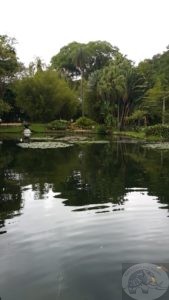
A quiet pond in the park
A quiet square
I had been told of a separate little square not too far from my accommodation that was a favourite with locals as well as the odd back-pack visitor to Rio, and so I went in search of this small little plaza. After several wrong turns, and finally right turns, I found the place spoken off, and it lived up to its relaxed yet lively atmosphere. A couple of small groups of musicians had staked out different corners of the square and were performing, each just loud enough to entertain the crowd, but none so loud as to drown out any of the others. In the middle of the plaza was a small seating area, lined on two sides by small stalls selling food and drink. A few other stalls were selling the kinds of trinkets found in flea markets. Overall, it was a wonderful little place to sit or stand for a while; to relax and enjoy the nice evening weather; to simply hang out and mingle with some of the locals, strike up a conversation or two, and let time melt away. If I were asked to lead you to this small plaza now, I probably could not, and perhaps that is for the best; some places are meant to be discovered, enjoyed, and forgotten; not to be shared or broadcast, overrun, ruined. It had been a wonderful day, relaxing, educational, colourful, but it was time to go home and rest for the following day, when I had grand plans of visiting two remaining major sites in Rio which I had seen, yet not entered: the National Library, and the Museu do Amanha, or the Museum of Tomorrow.
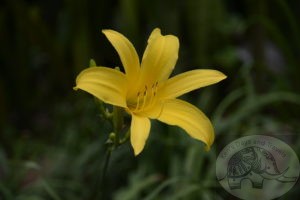
Colourful blooms to enjoy; nature’s sunshine even when it’s raining
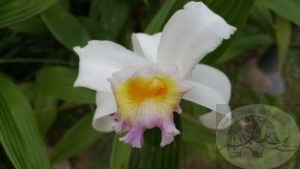
The beauty of orchids
